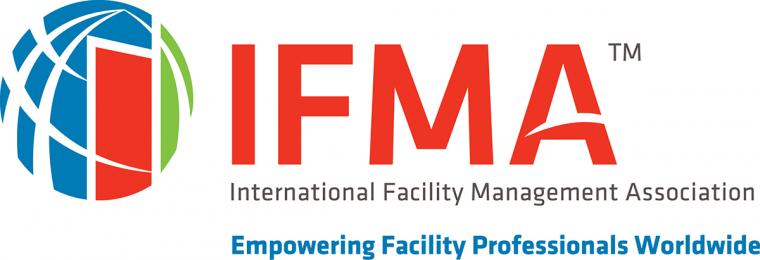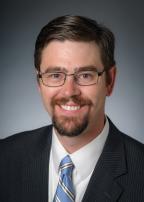
 Futurists are predicting that by 2025 there will be one trillion building sensors in place around the world. That’s 120 building sensors in operation for every person alive. How will that change the way people work? How will it improve our quality of life and reduce our harmful impact on the environment? At the center of these answers is the emerging role of the facility management (FM) professional.
Futurists are predicting that by 2025 there will be one trillion building sensors in place around the world. That’s 120 building sensors in operation for every person alive. How will that change the way people work? How will it improve our quality of life and reduce our harmful impact on the environment? At the center of these answers is the emerging role of the facility management (FM) professional.
It’s true that outside of the cadre of built environment industries, FM is a relatively unknown and misunderstood field. This is, in part, due to the relatively new arrival of FM, once people stopped seeing the built environment as a container and started treating it like a tool to accomplish set objectives. Yet, despite being a young field when compared to, say, design and construction or real estate, FM is growing in prominence because everyone appreciates smart building technology. Whether it helps reduce their daily work commute, reduces the greenhouse gas footprint of their office or makes them a little more productive at work, smart buildings are making a competitive difference around the world and across industries.
Consider for example, The Edge in Amsterdam. Sometimes called the smartest building in the world, it employs 28,000 sensors that improve how the building serves individual needs of its occupants, from knowing how they prefer lighting and temperature to directing cleaning crews to only service rooms that have actually been used that day. Thousands of tiny improvements add up to substantial differences, which is why smart building technology is being adopted at a faster-than-ever rate.
But there’s a problem. Too often, smart buildings aren’t performing as well as had been expected. Something is missing between the design phase of a smart building and the execution.
This “Performance Gap,” as it has been called by the Royal Institution of Chartered Surveyors (RICS) is summed up in its research (Sustainable Construction: Realizing the opportunities for built environment professionals): “There is substantial evidence that buildings do not perform as well as anticipated at the design stage. Post-occupancy evaluations showed that actual energy consumption in buildings was often twice as much as predicted.” The performance gap is most often seen in energy use and savings because that’s something that is frequently measured and often regulated. It exists, however, in any type of smart technology. Companies invest large sums of money creating smart buildings that, all too often, do not perform as intended.
The United States Federal Government identified just such a performance gap when federal buildings failed to meet efficiency targets that had been set. The Government Accountability Office (GAO) was tasked to identify the cause. Among its findings was that smart buildings full of smart technology would not operate as intended unless there were appropriately trained people to run them.
Facility management professionals hold the keys to unlocking the built environment of the future. You need smart people to run smart buildings.
 The Magicians Behind the Curtain
The Magicians Behind the Curtain
International Facility Management Association (IFMA) defines FM as “a profession that encompasses multiple disciplines to ensure functionality of the built environment by integrating people, place, process and technology.” A survey of FM professionals from around the world identified 11 core competencies that a modern FM professional needs. These include emergency preparedness and business continuity, environmental stewardship and sustainability, finance and business, leadership and strategy, operations and maintenance, real estate and property management and, of course, technology.
If the 20th century was the century of the business manager, the 21st century could very well be the century of the facility manager. The built environment has become the center of so many of our collective expectations for the future; from the infrastructure that supports self-driving cars to predictive office spaces that know what occupants want before they ask for it. Right in the center of it all is the facility manager helping to make it happen.
With all this promise, there simply isn’t a better time to get into FM. The plain fact is, there is huge demand for more people in the field specifically because it has grown so fast. When they learn about it, young people are especially drawn to the field as a way to advance their desire to help people and the environment.
Case in point: IFMA surveyed employers in Los Angeles, Orange, Riverside and San Bernardino counties. Employers expect to hire an additional 3,200 facility managers over the next 12 months, a 14 percent growth rate. There isn’t anything particularly special about the Southern California region; we’d expect to see similar opportunity just about anywhere in the world.
Many who are hoping to get started in the FM career are seeking out an FM degree program or visiting http://fm.training/ for on-demand training and resources to help earn an FM credential.
A Thriving Global Industry
May 16 is World FM Day, a time to show appreciation for all of the behind-the-scenes magic FM professionals achieve. There are 25 million people working in FM around the world. It’s a US$1.1 trillion industry that has grown tremendously in recent decades. But World FM is also a good time for people to look at how FM has impacted their lives, their jobs and the quality of their lives.
IFMA has had a global mandate from very early on. Anywhere there are buildings and people occupying those buildings, there is FM in some form or another. For years, we’ve been advancing the profession, training highly effective FM practitioners and working to unify and standardize the practice.
It’s true there’s a lot of variety around the world. FM in California may look different from FM in France or in the UAE. In fact, there are often significant differences in how FM is practiced between buildings in the same company. As the industry develops a truly global community and to bring all of those varied work streams together, it becomes possible to distill the best practices and share them around the world.
One effective strategy to standardize FM practices within a company is to seek standardized training. IFMA, for example, offers a line of credentials, including the Facility Management Professional™ (FMP®), the targeted Sustainability Facility Professional® (SFP®) and the Facility Management Learning System™, which covers the competencies tested on the Certified Facility Manager® (CFM®) Exam. Companies in which a significant portion of FM professionals hold at the minimum an FMP often see an increase in efficiency.
In the larger sense, there are two critically important changes happening in FM right now.
First is industry unification. For the first time, FM professionals are learning to speak the same professional language around the world. Last year saw the publication of the very first ISO standards for FM. Global standards mean transferable skills and increased efficiency.
Second is industry integration. FM is increasingly involved with every aspect of the built environment from design and construction to recommissioning. This helps ensure that the people who must operate a building are working with the people who are designing and building it.
People — everyday people as well as company executives — are expecting more and more from FM. And with the emergence of a global community, industry unification and integration and better training resources than ever, FM is poised to deliver today and into the future. T&ID

